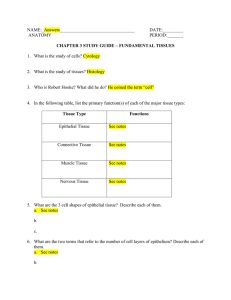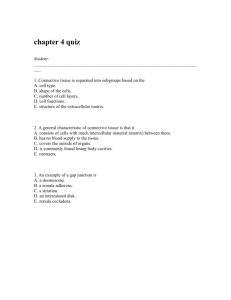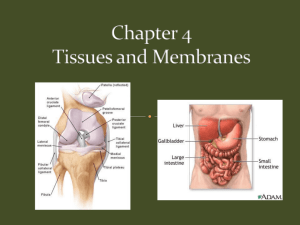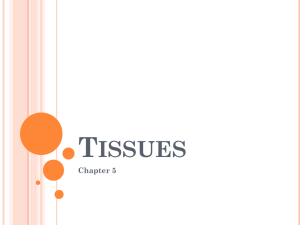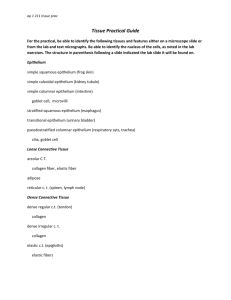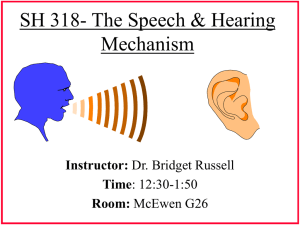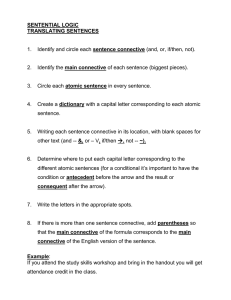histology - Southington Public Schools
advertisement
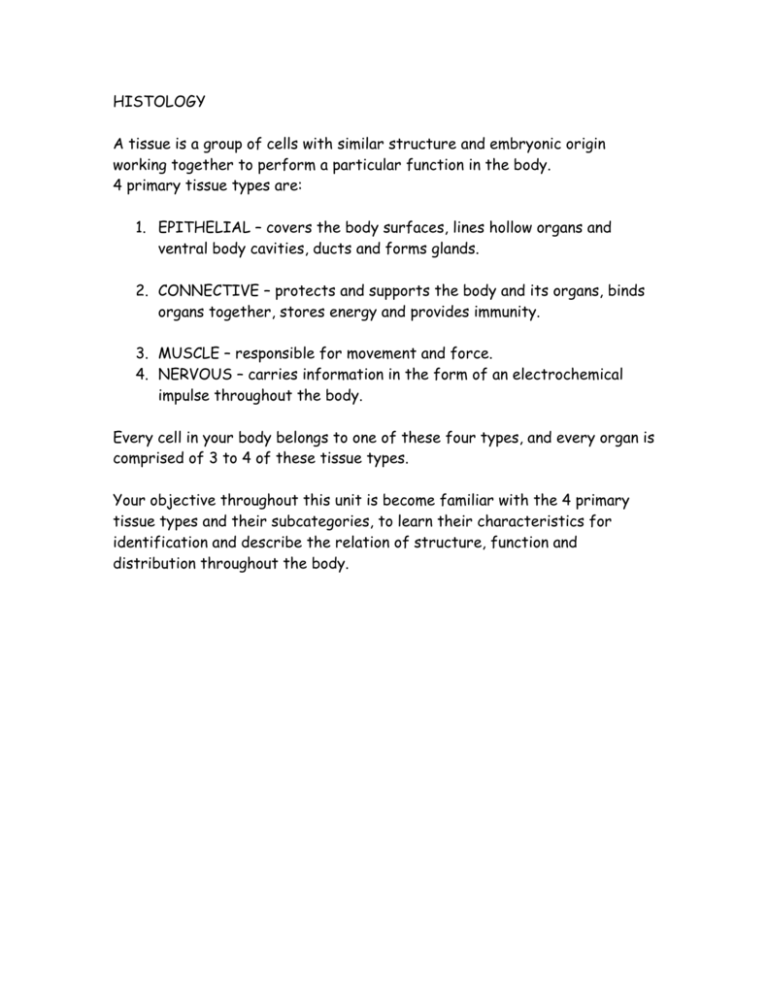
HISTOLOGY A tissue is a group of cells with similar structure and embryonic origin working together to perform a particular function in the body. 4 primary tissue types are: 1. EPITHELIAL – covers the body surfaces, lines hollow organs and ventral body cavities, ducts and forms glands. 2. CONNECTIVE – protects and supports the body and its organs, binds organs together, stores energy and provides immunity. 3. MUSCLE – responsible for movement and force. 4. NERVOUS – carries information in the form of an electrochemical impulse throughout the body. Every cell in your body belongs to one of these four types, and every organ is comprised of 3 to 4 of these tissue types. Your objective throughout this unit is become familiar with the 4 primary tissue types and their subcategories, to learn their characteristics for identification and describe the relation of structure, function and distribution throughout the body. EPITHELIAL FUNCTIONS 1. Protection from: physical damage, drying out, chemical injury, infection 2. Regulation of materials: diffusion, absorption, filtration, secretion, excretion into/out of the deeper tissues of the body they cover or line. 3. Form sensory parts of organs such as eye, ear, mouth and nose. 4. Glandular epithelium specialized for producing secretions containing salts, enzymes, hormones, mucus, fats, etc. Products include: milk, insulin, sweat, saliva, calcitonin, tears, bile Simple epithelium: a. One cell layer, very thin, found in areas of minimal wear and tear. b. Main function is to allow for diffusion of substances. c. Found as mostly linings Stratified epithelium: a. composed of several cell layers, thick b. main function is to protect what they cover c. cells nearest the basement membrane have a distorted shape, therefore look toward the lumen for the cell shape. CONNECTIVE TISSUE Structural Characteristics 1. Cells FibroHemocytoChondroOsteo - -blast = -cyte = 2. Extracellular matrix Tissue component that is NOT the cells, made up of: A. GROUND SUBSTANCE B. FIBERS = = THREE TYPES OF FIBERS: 1. Collagen (aka white) – 2. Elastic (aka yellow) – 3. Reticular – Connective tissues are subdivided into 4 classes based on cell type, fiber type, and the ground substance. They have a common embryonic origin called mesenchyme. Connective Tissue Classes: 1. Connective Tissue Proper: a. Loose Areolar Adipose Reticular b. dense regular irregular elastic 2. Cartilage a. hyaline b. fibrocartilage c. elastic 3. Bone a. compact b. spongy (aka cancellous) 4. blood Connective Tissue Functions: 1. Bind, support and package 2. Protect, defend and repair 3. Insulation 4. Transportation
